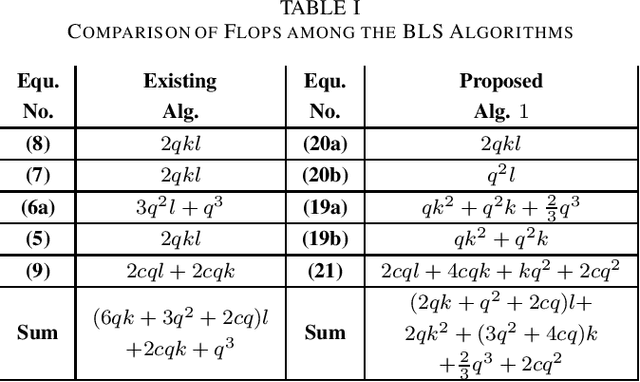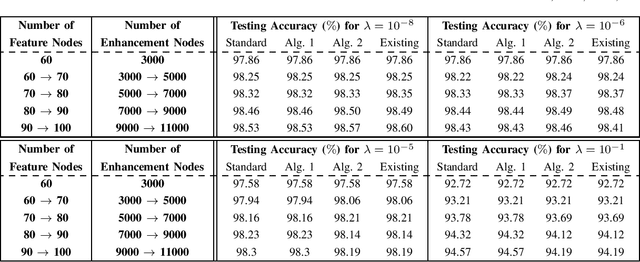Efficient Ridge Solution for the Incremental Broad Learning System on Added Nodes by Inverse Cholesky Factorization of a Partitioned Matrix
Paper and Code
Nov 12, 2019



To accelerate the existing Broad Learning System (BLS) for new added nodes in [7], we extend the inverse Cholesky factorization in [10] to deduce an efficient inverse Cholesky factorization for a Hermitian matrix partitioned into 2 * 2 blocks, which is utilized to develop the proposed BLS algorithm 1. The proposed BLS algorithm 1 compute the ridge solution (i.e, the output weights) from the inverse Cholesky factor of the Hermitian matrix in the ridge inverse, and update the inverse Cholesky factor efficiently. From the proposed BLS algorithm 1, we deduce the proposed ridge inverse, which can be obtained from the generalized inverse in [7] by just change one matrix in the equation to compute the newly added sub-matrix. We also modify the proposed algorithm 1 into the proposed algorithm 2, which is equivalent to the existing BLS algorithm [7] in terms of numerical computations. The proposed algorithms 1 and 2 can reduce the computational complexity, since usually the Hermitian matrix in the ridge inverse is smaller than the ridge inverse. With respect to the existing BLS algorithm, the proposed algorithms 1 and 2 usually require about 13 and 2 3 of complexities, respectively, while in numerical experiments they achieve the speedups (in each additional training time) of 2.40 - 2.91 and 1.36 - 1.60, respectively. Numerical experiments also show that the proposed algorithm 1 and the standard ridge solution always bear the same testing accuracy, and usually so do the proposed algorithm 2 and the existing BLS algorithm. The existing BLS assumes the ridge parameter lamda->0, since it is based on the generalized inverse with the ridge regression approximation. When the assumption of lamda-> 0 is not satisfied, the standard ridge solution obviously achieves a better testing accuracy than the existing BLS algorithm in numerical experiments.
 Add to Chrome
Add to Chrome Add to Firefox
Add to Firefox Add to Edge
Add to Edge